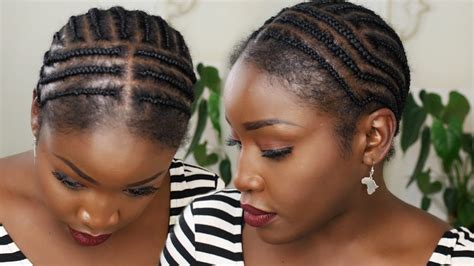Wigs have become increasingly popular in recent years, offering a convenient and versatile way to change one’s appearance. However, for the wig to look natural and stay in place, it’s essential to have a braid or cornrows underneath. This braid provides a foundation for the wig and helps to distribute its weight evenly, preventing it from slipping or looking bulky.

Why Braid Matters
Braiding the hair before putting on a wig has several important benefits:
- Secure Fit: Braiding the hair creates a foundation for the wig, preventing it from slipping or moving around.
- Reduces Tension: By distributing the wig’s weight evenly, a braid reduces tension on the hair follicles, minimizing breakage and discomfort.
- Natural Appearance: A well-braided base creates a smooth, even surface for the wig, resulting in a more natural-looking fit.
- Heat Protection: Braiding the hair can act as a barrier between the wig and the scalp, protecting the hair from heat damage caused by styling tools.
How to Braid for a Wig
Materials:
- Brush or comb
- Hairspray (optional)
Step-by-Step Approach:
- Prepare the Hair: Brush or comb your hair to remove any tangles or knots.
- Moisturize: Apply a small amount of leave-in conditioner or hair moisturizer to your hair to smooth it and prevent frizz.
- Section the Hair: Divide your hair into two sections, one at the front and one at the back.
- Start Braiding: Begin braiding the front section of hair and secure it with an elastic band.
- Repeat: Continue braiding the remaining sections of hair and secure each braid with an elastic band.
Tips:
- Tightness: Braid your hair tightly enough to provide a secure foundation, but not so tightly that it causes discomfort.
- Smoothness: Use hairspray or a smoothing serum to eliminate frizz and create a polished look.
- Length: The length of the braid should be at least the length of the wig you plan to wear.
Choosing the Best Braid
The type of braid you choose depends on your hair type and the desired outcome.
For Fine or Thin Hair:
- Cornrows: Small, tight braids that lie close to the scalp, providing a strong foundation.
- French Braid: A classic braid that creates a smooth, elegant look.
For Thick or Coarse Hair:
- Box Braids: Large, square-shaped braids that are durable and can hold weight well.
- Ghana Braids: Similar to cornrows, but with a thicker, more voluminous appearance.
Table 1: Comparison of Braid Types for Wigs
| Braid Type | Benefits | Drawbacks |
|---|---|---|
| Cornrows | Secure fit, close to scalp | Can be time-consuming to create |
| French Braid | Smooth, elegant look | Requires more skill to braid |
| Box Braids | Durable, can hold weight | Can be heavy and bulky |
| Ghana Braids | Voluminous, flattering | Similar drawbacks to box braids |
Frequently Asked Questions (FAQs)
-
Can I braid my hair myself for a wig?
Yes, with practice and patience, you can braid your hair yourself using the steps outlined above. -
How often should I braid my hair for a wig?
The frequency of braiding depends on the type of braid and the condition of your hair. As a general rule, you can braid your hair every 2-3 days. -
How long should I keep my braid in?
You can keep your braid in for as long as you wear the wig. However, it’s important to remove the wig and braid at least once a week to wash your hair and give your scalp a break. -
Can I use heat styling tools on my braided hair?
Yes, but only with caution. Use low heat settings and avoid direct heat on the scalp. -
How can I protect my hair from damage when wearing a wig?
Moisturize your hair regularly, braid it tightly, and use a heat protectant spray when styling with heat tools. -
What if my hair is too short to braid?
You can use hair extensions or clip-in braids to add length and create a base for the wig.
Conclusion
Braiding the hair before wearing a wig is an essential step to ensure a secure, natural-looking fit. Choosing the right braid type and following the proper braiding technique can help you achieve a flawless appearance and protect your hair from damage. By investing a little time and effort into braiding, you can enjoy a comfortable and stylish wig-wearing experience.
